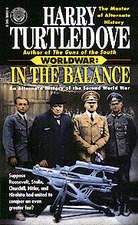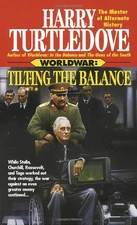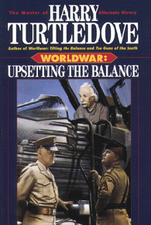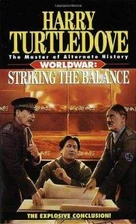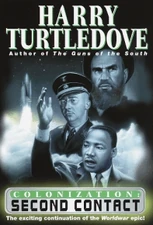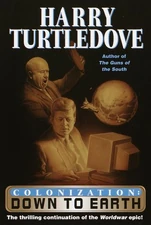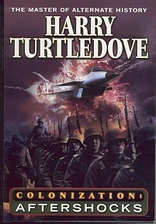| Race Invasion of the United Kingdom | |||||||
|---|---|---|---|---|---|---|---|
| Part of The Race Invasion of Tosev 3 | |||||||
|
|||||||
| Belligerents | |||||||
| United Kingdom | The Race | ||||||
The Race Invasion of the United Kingdom was the greatest airborne operation ever undertaken by the Race during the Invasion of Tosev 3. The invasion occurred in the late summer of 1943, with landing zones established to the north and south of London. Both forces pushed toward London, but were stopped dead when the British employed poison gas. This eventually led to unacceptable casualties and the Race withdrew. In retrospect, defeating the invasion was Britain's only true victory during the war with the Race.
Background[]
Due to the small size of the British Isles, the United Kingdom had escaped the full force of the Race's military might when they first landed, but it had proven to be little more than a nuisance to the Race in the Middle East, India and northern France.
Fleetlord Atvar had planned to commence an invasion of Britain after the Race had conquered Moscow and effectively knocked the Soviet Union out of the war; statistical analysis had given an invasion a higher-than-seventy percent probability of success under such circumstances. With the Race's drive on Moscow halted by the Soviet atomic bomb near Kaluga, a lull in the fighting against the USSR achieved the same effect. In addition, the failure of shiplord Straha's attempted coup and his subsequent defection to the Americans provided another impetus for Atvar; it was feared that he had revealed much of the Race's planning, allowing the Tosevites to predict what the Race intended to do for the next two years. Thus the reasoning behind the invasion of Britain was more political than military.
At the time, the Race in France were within striking distance of the Rhine River, and were massing for an invasion of Germany. Because of Straha's defection, it was decided that England would be invaded, not Germany. The drive against the Rhine River was halted while forces were transferred to France for an invasion of England.
The Campaign[]
The Invasion[]
The Invasion began with an airborne assault using parachutists and transport aircraft. Two landing zones were carved out in the south and Midlands of the UK, with the two forces intending to conquer London between them. The landing occurred smoothly in both zones, but soon the RAF struck back in force. After the Race's arrival a year earlier, the RAF had been hoarding aircraft of all types, and now threw everything it had into the fight. While the Race's killercraft were able to dominate the skies, their transport planes were extremely vulnerable; whenever British fighters were able to swamp their escorts with sheer numbers, some of them broke through to shoot down transports ferrying troops and landcruisers.
Resistance within Race-occupied areas of the UK was heavy, with mortar attacks on airfields killing many ground crew staff and engineers. Despite this harassment, the landing zones were secured, allowing the Race to land a significant force and began to drive on London.
Midlands Zone[]
The Midlands Zone was initially quiet as the Race took longer to gather a significant force. Their zone was further inland and as a result, the invasion force consisted of airborne troops and helicopters able to do little more than form a defensive perimeter. However, once enough troops had arrived, the northern force swiftly advanced on nearby airfields. One such attack was made against the Bruntingthorpe Air Base, the site of the RAF's research and development on jet aircraft and airborne radar. The attack failed as the airfield's antiaircraft guns destroyed the Race's helicopter air cover, forcing the troops who had been landed to surrender.
South Zone[]
The South Zone was the more active front in the UK. The British could not stop the Race's armoured thrusts, but once the Landcruisers had moved on, the conquered areas seethed with rebellion, tying down troops and frustrating logistics. With no room to manoeuvre, the Race was forced to attack British strongpoints head-on, successfully but at great cost. Within the first week of the invasion, the cost in males and equipment had exceeded the computer projections for the campaign. Several heavy transports had been lost while flying to and from southern France, leaving the airborne logistics dangerously stretched.
British Counter Attack[]
As the Race continued its advance, the British prime minister Winston Churchill issued a dire warning under a flag of truce: evacuate from the United Kingdom or face an unspecified type of warfare not yet employed against the Race. Atvar threatened the complete destruction of Britain if atomic weapons were used, but Churchill denied that the weapons were nuclear.
Within two days of this exchange the British Army employed Mustard Gas and phosgene artillery shells against the Race's drive from the South near the city of St Albans. This blunted the Race's offensive and caused severe casualties amongst the Race's fighting males, who generally lacked gas masks. The use of chemical weapons allowed the British to retake St Albans but did not completely halt the Race's advance. Some gas masks were captured by the Race during this time, and for the first time in the war the Race was forced to adopt Tosevite technology for its own use rather than the reverse.
Second Offensive[]
After gas was employed, the southern Race force continued its advance but the northern army in the Midlands was forced on the defensive. This allowed the British Army to squeeze the Race pocket in the Midlands, even as the front in the south pushed on towards London allowing the Race to seize a broader stretch of territory. However, because of the gas the Race had to try manoeuvring around London from the west by way of Maidenhead, attempting to link up with the Midlands Zone.
Even as the Race advanced, heavy casualties from combat along with the constant gas attacks (with little to no protection from the latter) began to gnaw at the morale of the Race's infantry and they started fleeing the battlefield whenever gas was employed. The advance itself finally came to a halt at the river Thames in South Oxfordshire
Retreat and Evacuation[]
Even as the Race advanced in the south, the pocket in the Midlands was shrinking. Constant rebellion in Race-controlled England along with RAF interference was causing logistics to become a nightmare even in the south. As Atvar realised the campaign in England was lost, he and shiplord Kirel debated using atomic weapons to destroy Britain, but dismissed the idea as not being worth the political cost. As the southern army drew closer to London, the number of urbanized areas greatly increased, leaving more pockets of resistance in their rear. Flying transports over Britain now grew riskier every day; not only did the RAF intensify its efforts against them but so did Luftwaffe fighters based in northern France. Realising that the battle in the Midlands was lost, Atvar ordered the evacuation of the northern army; his decision would save some of the males there but forfeit most of their equipment.
As the Race started evacuating the Midlands Zone, the RAF began using remote controlled dummy aircraft to let the Race expend precious air-to-air missiles against them, before engaging the Killercraft with manned fighters. This tactic led to a number of Killercraft being lost before the Race finally recognized the tactic.
After the Midlands Zone was evacuated, the British Army swung south against the Lizards still on English soil. The Race engaged the British in a withdrawing fight, before finally leaving the British Isles altogether shortly before the onset of winter.
Aftermath[]
The Race had staked much and made a sizeable effort in invading the United Kingdom, in the end for little gain. Although Britain had emerged victorious, she had also suffered much devastation and was briefly knocked out of the war against the Race. However, by proving the Race extremely vulnerable to chemical weapons, the British inspired the other major powers around the world to begin using them as well and in larger quantities. The campaign was also the first and last time the Race would conduct any island invasions. After the evacuation of Britain was completed, the Race decided to continue its land advance toward the Rhine while Britain was still weak.
However, the Race's decision to invade the United Kingdom had allowed the Germans to dig in and prepare for the eventual Race offensive. It had also bought valuable time for the Germans to complete their first atomic bomb which was used shortly after to stall the Race's advance near Breslau in eastern Germany. Many Race veterans of the failed invasion realised that if they ignored Britain and maintained the pressure on Germany, the Germans wouldn't have been able to stop them.
While defeating the invasion was a tremendous short-term victory for the United Kingdom, it also proved to be its only triumph in the war. British armies would be decisively defeated the following year in the Middle East and India, and the Peace of Cairo would result in the de facto fall of the British Empire.
| |||||||||||||||||||||||||
